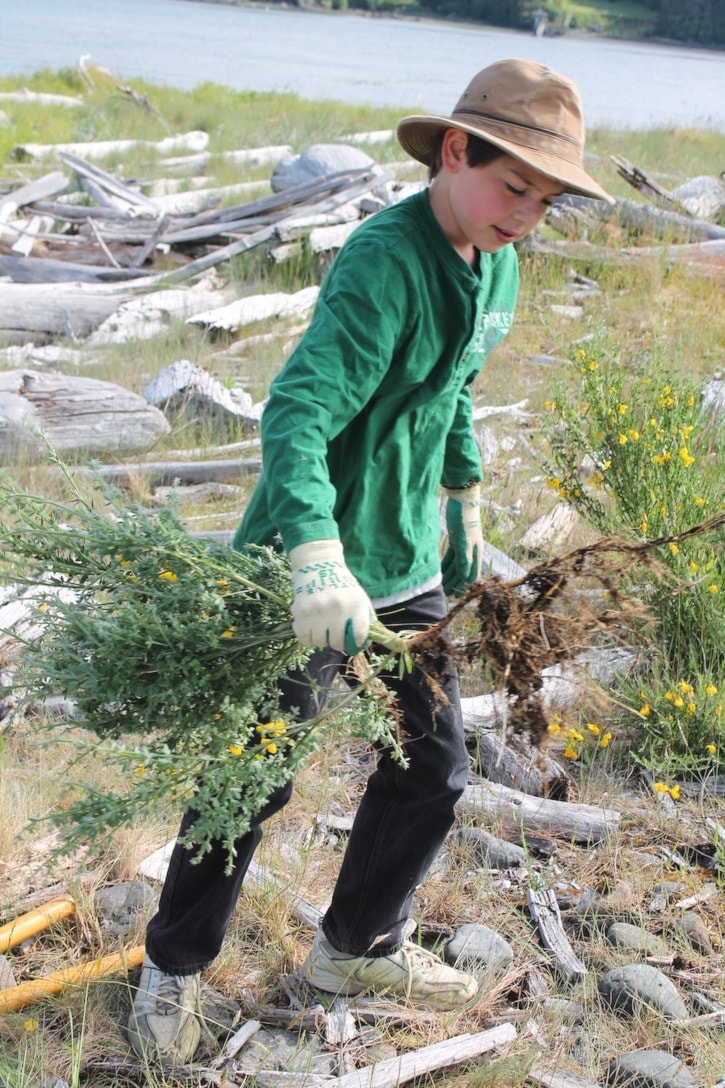This year’s broom pull eradicated a fair number of those invasive yellow-flowering plants on Whiffin Spit.
This year, the pull took place over two days, May 15 and May 17. On the first event, students from EMCS came out for a few hours and filled up an entire skip (also known as a dumpster bin) of nasty broom bits. At the second pull, an almost equal amount was gathered.
“We put in roughly 65 volunteer hours on the two days,” summed up Rosemary.
According to BroomBusters.org, Scotch broom was introduced to on Vancouver Island in 1850 by Captain Walter Grant. He picked up some seeds in Hawaii. “Three plants germinated at Sooke and now colonize southern Vancouver Island. Scotch broom grows so well in this area that it’s driven out many native plants.”
Rosemary Jorna is dedicated to eradicating broom from the Spit.
“I do this because I love the Spit. And I know how incredibly invasive it (broom) is,” she said.
She happily pointed out some native plants — the common and tough beach pea, and the less common nodding onion and Maritime thrift — that are making a come-back on the Spit. She added that one of the reasons why broom is so invasive is because the seeds can survive for up to 50 years. Pointing up to a sea of yellow Scotch broom in the distant hills, Rosemary noted the recent influx of development has further invited the broom to spread.
Rosemary, her husband Sid, and the many volunteers who showed up on those days, are all dedicated to getting rid of Scotch broom on the Spit. Expect this broom pull to continue in future years.
In the meanwhile, Rosemary and her volunteers suggested that people walking the Spit in the winter months can help out tremendously too, through the small but significant act of pulling one plant when the soil is wet and the upheaval easy.
